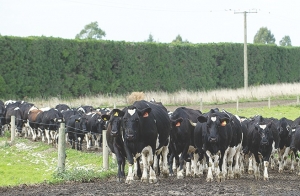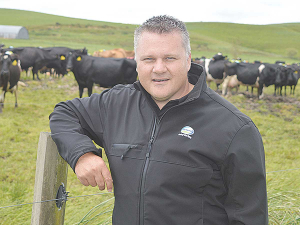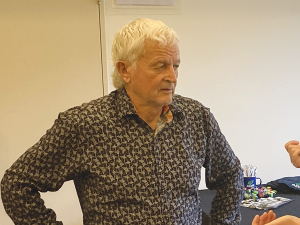If any hoof has more than a 2mm differential between either outer or inner claw, then risk of lameness is increased, judging by the findings of a newly published study of three large-scale Canterbury farms.
The study, reported in the November issue of the New Zealand Veterinary Journal, included 2695 cows. The authors found trimming to level claws delayed the onset of lameness but did not reduce incidence by the end of the season.
“The effect seemed to be there for about 10 weeks,” Mark Bryan, one of the report’s authors, told Dairy News. “The incidence was reduced in that first 70 days [after trimming] but after that there was no difference.”
That’s not to say trimming to level uneven claws isn’t a worthwhile practice. Rather, farmers need to be aware hooves grow back and the benefit may have a limited timeframe.
Bryan’s a director of VetSouth, Winton, and was called in to help study instigators and fellow report authors Helwi Tacoma and Fred Hoekstra set up the work and analysis of resulting data.
Cows were enrolled in the study in November 2009. All had calved more than a week, were not on antibiotics, and were grazing pasture between twice-a-day milking.
At the outset both hind feet on all cows were examined by trained operators, noting height differential between claws. Cows were then blocked by age and breed, and randomly assigned to treatment (ie trimming) or control groups. All trimming was done by the same experienced practitioner. Thereafter farm staff coached in identification and description of lameness lesions recorded incidence and treated as appropriate.
By the end of the season at least one incidence of lameness had been recorded in 10% of limbs, trimmed or not.
Nearly 18% of untrimmed cows had no claw height differential at the outset. Incidence of lameness among these was 11.6% but among those with over a 4mm difference in claw height, incidence was 15.8%.
Breed, age and claw height differential were all significant risk factors, but there was no significant interaction between them. Fewer Jerseys went lame, and four-year-olds had the lowest incidence; nine- and ten-year-olds were the highest.
There was also a significant farm effect, with 7.1% incidence on one farm, but 11% and nearly 12% on the other two.
Preliminary findings of the study were presented last year at an international conference on lame cattle in Rotorua. Bryan says it prompted some “robust discussion” and another look at the data, which lead to the NZVJ paper.
The authors note that for some of the factors, such as lower risk of lameness in Jerseys, the paper appears to be the first peer-reviewed work on the topic in New Zealand. As for the effects of trimming, they say they’re unaware of any studies anywhere of such treatments for cows at pasture.
The bottom line is that there’s still an awful lot to learn about the incidence and causes of what is the second biggest animal health issue in New Zealand’s herds, says Bryan. “We need more research. We just don’t know enough about lame cows.”
















